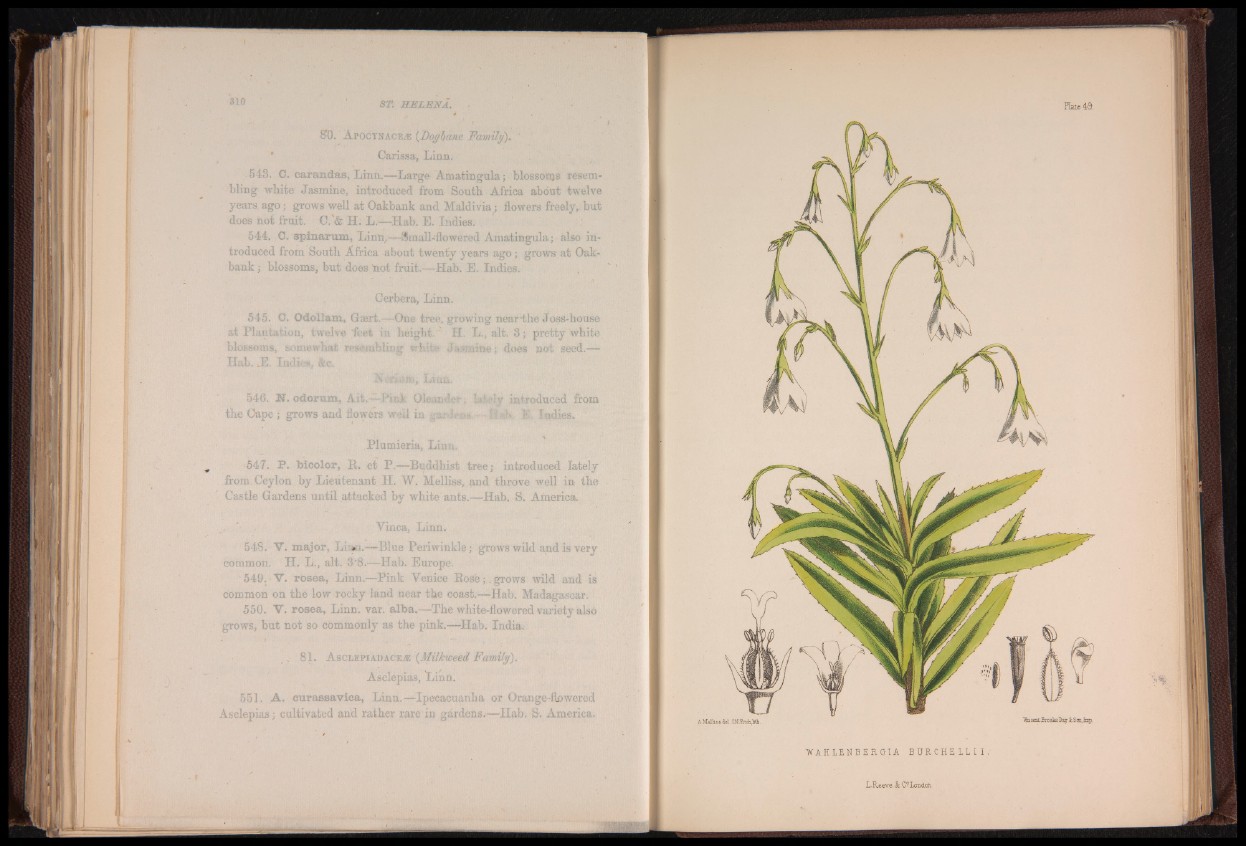
543. C. carandas, Linn.—Large Amatingula; blossoms resembling
white Jasmine, introduced from South Africa about twelve
years ago • grows well at Oakbank and Maldivia; flowers freely, but
does not fruit. C.'& H. L.—Hab. E. Indies.
544. C. spinarum, Linn.—Small-flowered Amatingula; also introduced
from South Africa about twenty years ago; grows a t Oakbank
; blossoms, but does hot fruit.—Hab. E. Indies.
Cerbera, Linn.
545. C. Odollam, Ghert.—One tree, growing near'the Joss-house
at Plantation, twelve feet in height. ' H. L., alt. 3; pretty white
blossoms, somewhat resembling whit* Jasmine; does not seed.—
Hab. ,E. Indies, &c.
R m , Linh.
546. If. odorum, Ait.—Pink Oleander; k4#ly introduced from
the Cape ; grows and flowers well in gardea* IS, Indies.
Plumieria, Linn.
547. P. bicolor, R. et P.—Buddhist tree; introduced lately
from. Ceylon by Lieutenant H. W. Melliss, and throve well in the
Castle Gardens until attacked by white ants.—Hab. S. America
. Vinca, Linn.
548. V. major, L , .—Blue Periwinkle; grows wild and is very
common. H. L., alt. 8'8.—Hab. Europe.
549. V. rosea, Linn.—Pink Venice Rose;,grows wild and is
common on the low rocky land near the coast.—Hah. Madagascar.
550. V. rosea, Linn. var. alba.—The white-flowered variety also
grows, but not so commonly as the pink.—Hab. India.
81. AscLKPiADACEiE (Milkweed Family).
Asclepias, Linn.
551. A. curassavica, Linn.—Ipecacuanha or Orange-flowered
Asclepias; cultivated and rather rare in gardens;—Hab. &. America.